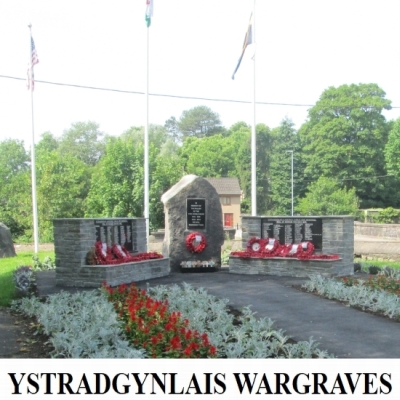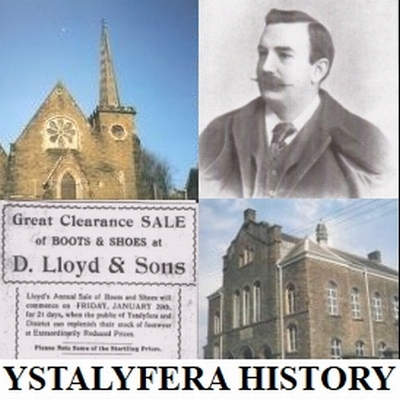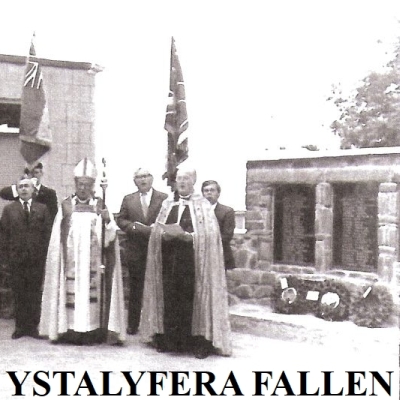Ystradgynlais History
Saint David's Church
Saint David's Church
Abercrave
Saint David's Church, Abercrave is located on the North side of the A4067, after Abercrave proper as you go up the valley towards Sennybridge, and is set back from the road with the churchyard in front. The cornerstone was laid in 1911, and it was completed in 1911-1912 to a design by J Cook Rees of Neath. The building is constructed of coursed rock-faced Pennant stone with ashlar lancets. Inside the church, the pulpit is elaborately carved, with the figure of a bishop upon it, whilst the stained glass windows include work by Powells, installed in 1951.
The Closing Eucharist at St David's Church, Abercrave was held on 10 April 2016, with the Right Rev John Davies, Bishop of Swansea and Brecon. From the order of service, the following information comes, written by Canon Dewi Roberts, Priest with oversight. The last hymn sung at the church was the aptly named "Final Hymn/Emyn olaf" sung to the tune of "Lord for the years".
St David's was consecrated on the afternoon of Tuesday July 16th 1912 by the Right Reverend John Owen, the famous Bishop of Saint David's (this parish, then, was in the diocese of Saint David's). On that evening another service was held during which the Suffragen bishop of Swansea, the Right Reverend Edward Latham Bevan preached. In 1923 he became the first Bishop of Swansea and Brecon. Bishop John Owen began the consecration service with words which included the following "Let us not doubt, but He (our Heavenly Father) will also approve our godly purposes, of setting apart this place in solemn manner, to the performance of the several offices of Religious Worship."
Over the past 104 years this church has faithfully served the community in providing a space for worship and prayer. It has inspired people to discover faith and it has encouraged people to serve God all over the world. During this service we give thanks to God for all who have served, ministered and worshipped here.
Aber-Craf/Abercrave parish was formed out of Ystradgynlais in 1925, and lasted until the reorganisation of the Upper Swansea Valley into Ministry Areas in 2016.
In 1957 the Vicar of Abercrave became responsible for Saint John the Baptist Church, Callwen.
In the 1980s, or 1990s, Capel Coelbren was added to create the three-church parish of Cwmtawe Uchaf.
After the closure of Abercrave Church, and the abolition of the parish, the other two places of worship continued as part of the Ministry Area which is centred on the churches and vicars of Ystalyfera (Saint David's) and Ystradgynlais (Saint Cynog's).
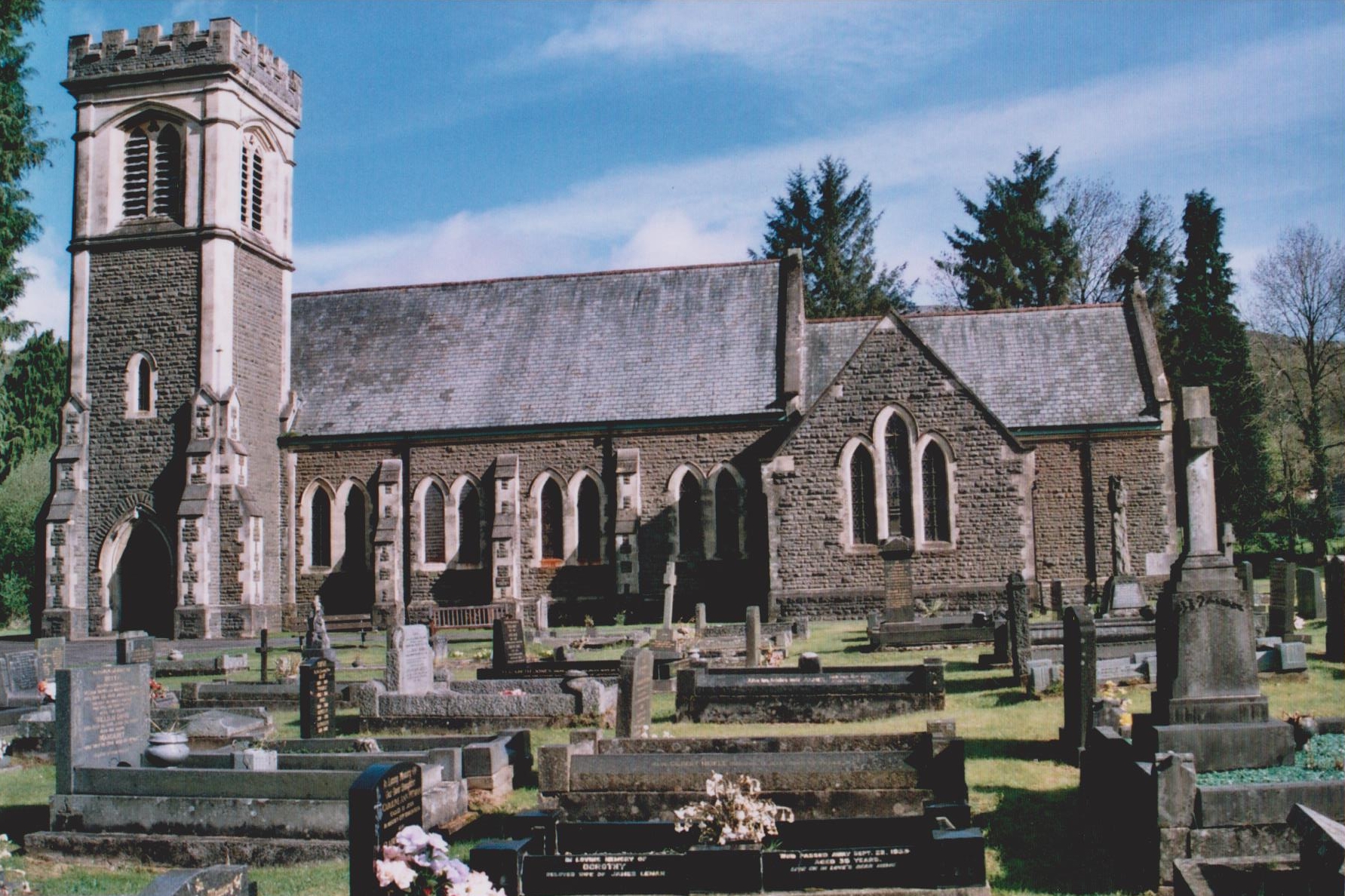
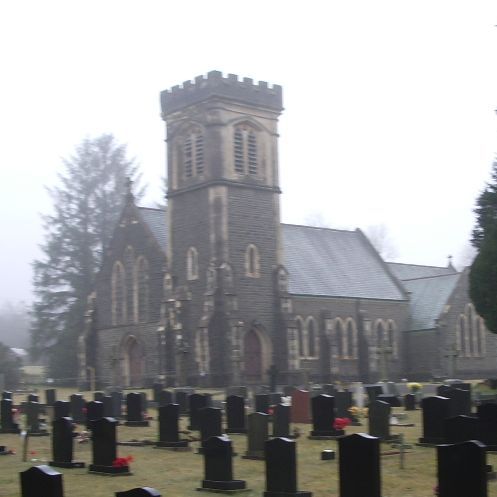
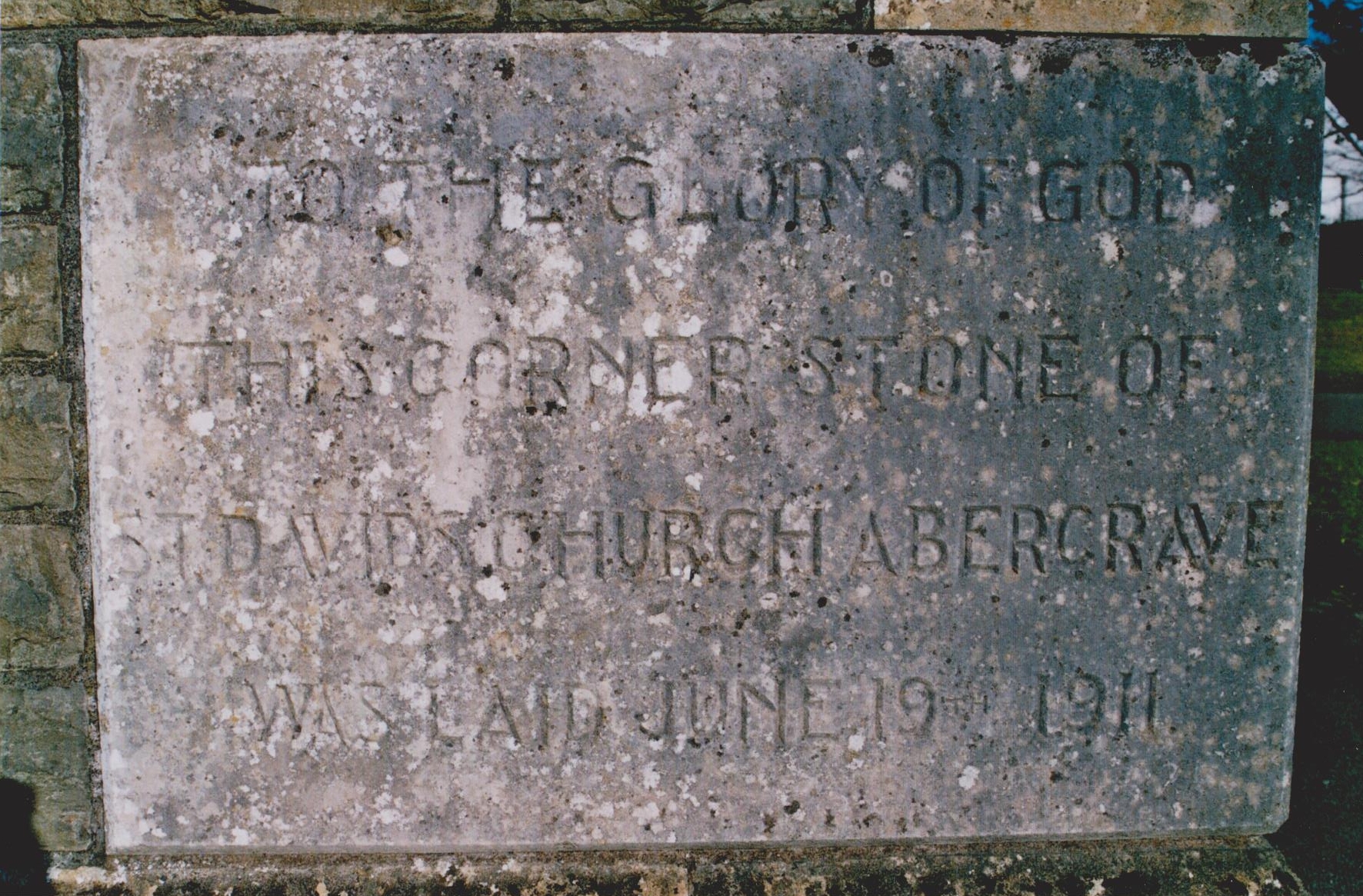
The corner stone of Saint David's, Abercrave, laid 19th June 1911
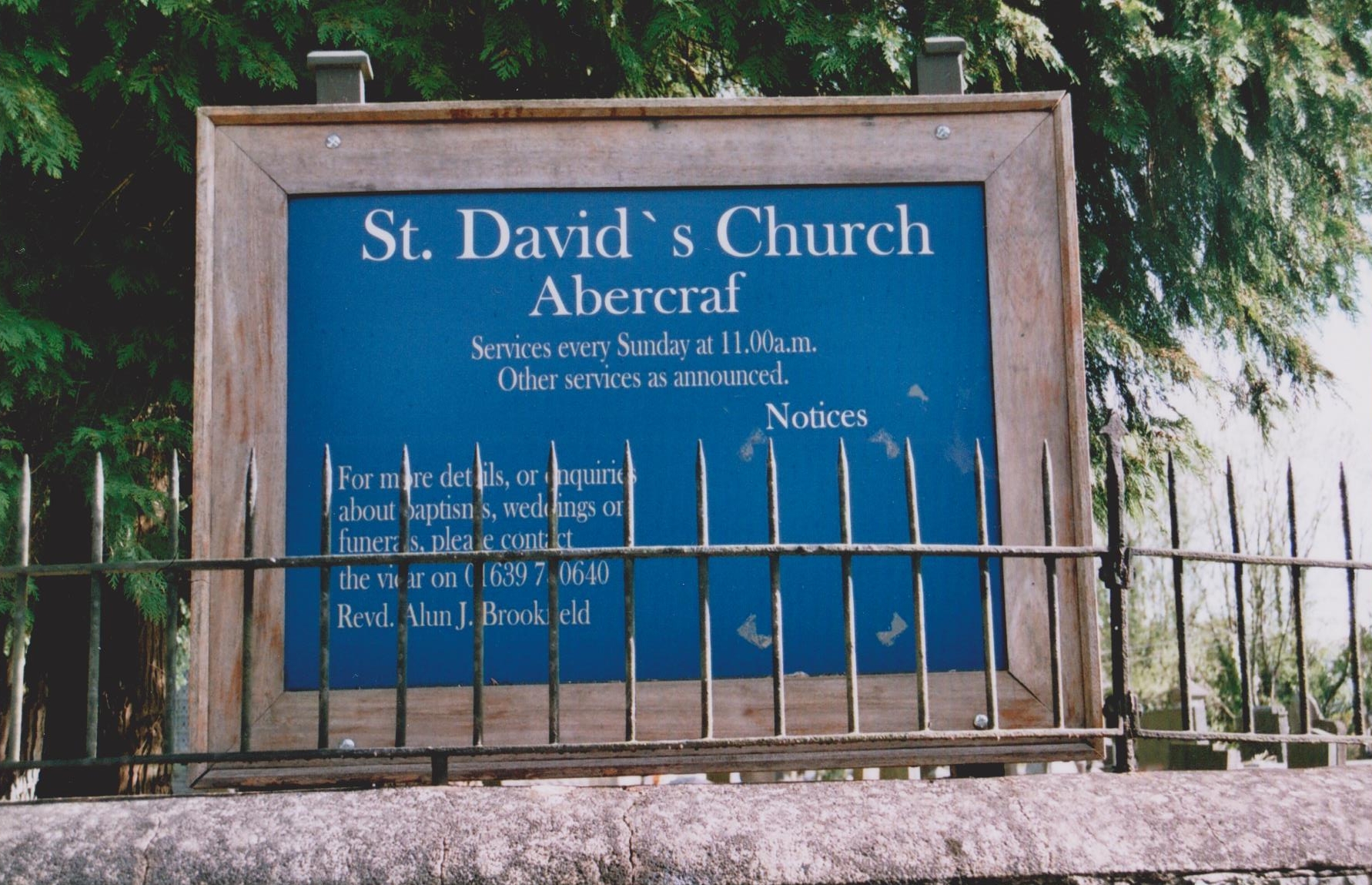
The notice board for Saint David's Church, Abercrave, before its closure
Reverend Morgan Jones
Curate of Abercrave
The Reverend Morgan Jones became Curate of Abercrave at the start of 1958. This newspaper article from The Voice newsaper, 24th January 1958, looks at his varied career to date and his decision to enter the Church.
REV MORGAN JONES
BIOLOGIST WHO BECAME A CLERGYMAN
Abercrave's new currate, the Rev Morgan Jones, is older than most curates - for nearly 30 years before entering the Church, he was a biologist.
It was only two years ago that he decided to make the church his career, although he has been a lay reader for more than 20 years.
During the war he served in the army, chiefly in India but he remained in uniform for five years after the hostilities ceased and during that time was Governor of an internment camp in Germany.
What eventually decided him to go in for the church? "There is nothing that I can really pinpoint", Mr Jones told me when I spoke to him this week.
I have always been attracted to the Church: I think it was a succession of events rather than any one thing that helped me to make up my mind.
Hailing from Capel Bangor in North Cardiganshire, he spent most of his life as a biologist in Aberystwyth but it was natural that for his first curacy, he should wish to come to Breconshire, both he and Mrs Jones have connections in the county.
While serving with the Army in India he contracted fever and was confined to bed for a year. On resuming duty he was assigned to a leave centre where he was welfare staff officer. Later he was appointed commandant of the camp.
It was this type of work which, he found, gave him the most satisfaction. "That, I think, is the greatest pointer to the reason for my entering the church", he said.
Mr Jones attained the rank of Major in the army and in 1945 transferred to Germany where he took command of an internment camp in which between 5000 and 6000 former Nazis were housed pending their rehabilitation.
In the camp he came into close contact with Lutheran and Roman Catholic priests. He is full of admiration for the work those men did, forgetting as they did the differences between their churches and working together for the good of the internees.
It was one of the internees, and artists, and formerly an ardent Nazi, who says Mr Jones brought home to him the full meaning of the Christian religion and the impact that the church can have on a person.
The church had been built by the internees in the camp and the artist agreed to paint a fresco above the Altar.
However a day after he began the work, orders for his release were received but so anxious was he to complete the work that he pleaded to be allowed to remain in the camp until he had finished.
His experiences as a soldier help him considerably in his work as a priest in this country.
He is used too, to taking services not only as a lay reader in Wales but also in the other countries he has visited.
On returning to this country in 1951, Mr Jones again took up his post as a biologist in Aberystwyth but still he was drawn towards the Church.
"The final decision to give up my post was quite a sudden one" he said, "and there was no special reason for it".
He commenced studies at St Deiniol's Library, Hawarden, in Flintshire completing the course in a year.
Late last year, he was appointed to the curacy of Abercrave and Callwen and was ordained on 21st December.
With his wife and two children he has just moved into a house outside the village of Abercrave, but because painters and decorators are still busy there he cannot yet really get down to work, Mr Jones told me.
"Although I have been here such a short time," he said, "I have found the people of the district really grand. They have done everything possible to help us out."
In one respect Mr Jones is especially fortunate for he is bilingual." That is a great help in the district such as this and at present there appears to be a shortage of curates who can speak fluent Welsh".
Possibly if there were more clergy and ministers who, before entering the Church, had taken on jobs which brought them into contact with ordinary people then they would have a better understanding of the needs of the people.
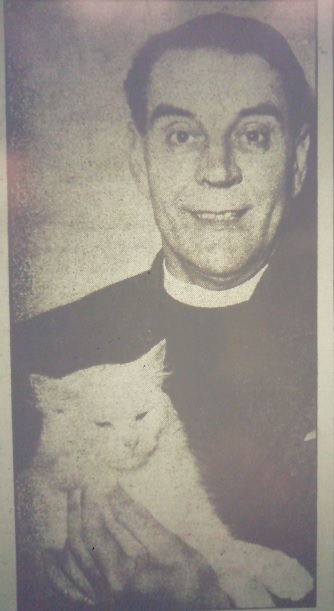
Reverend Morgan Jones, who became Curate of Abercrave in 1958.
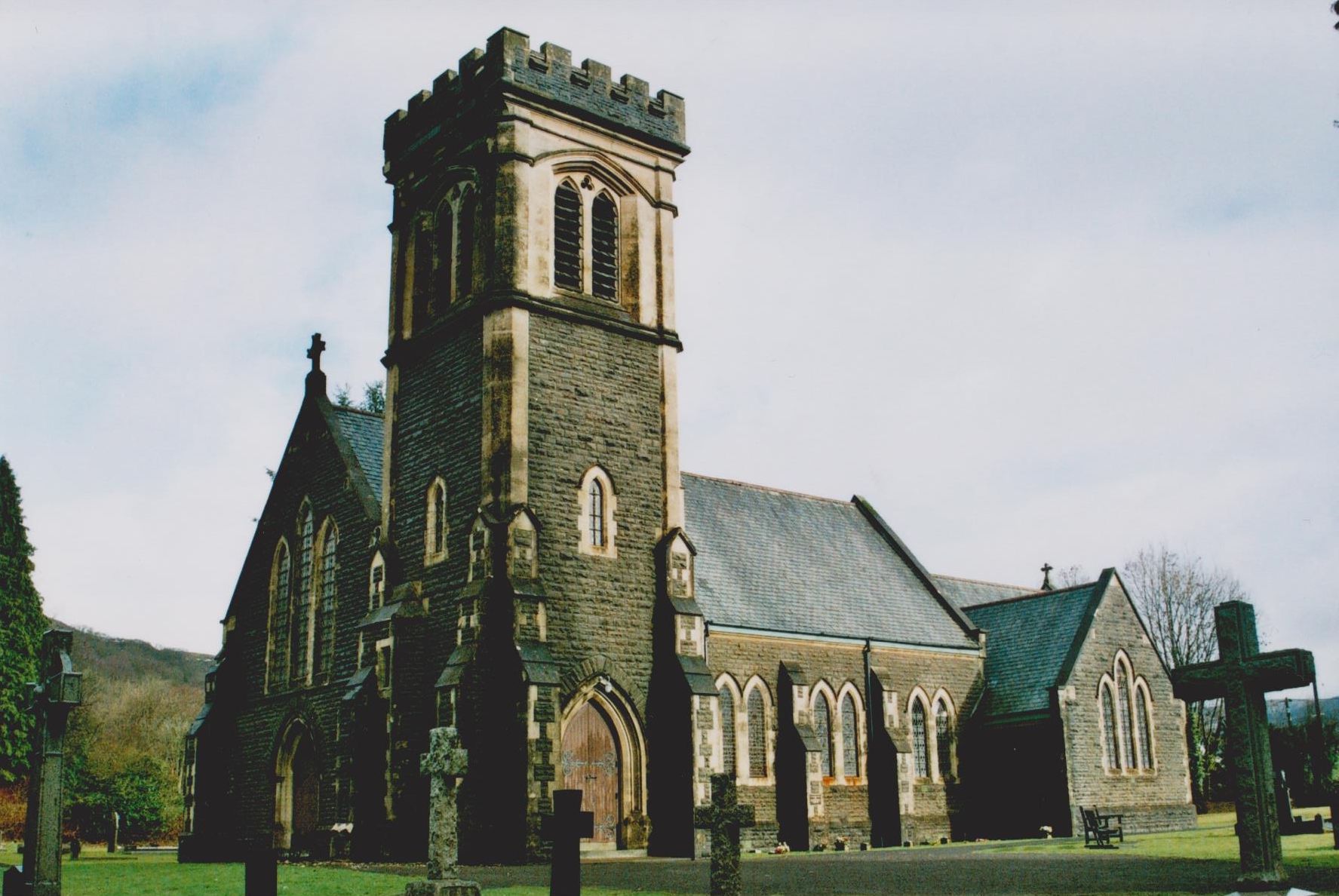
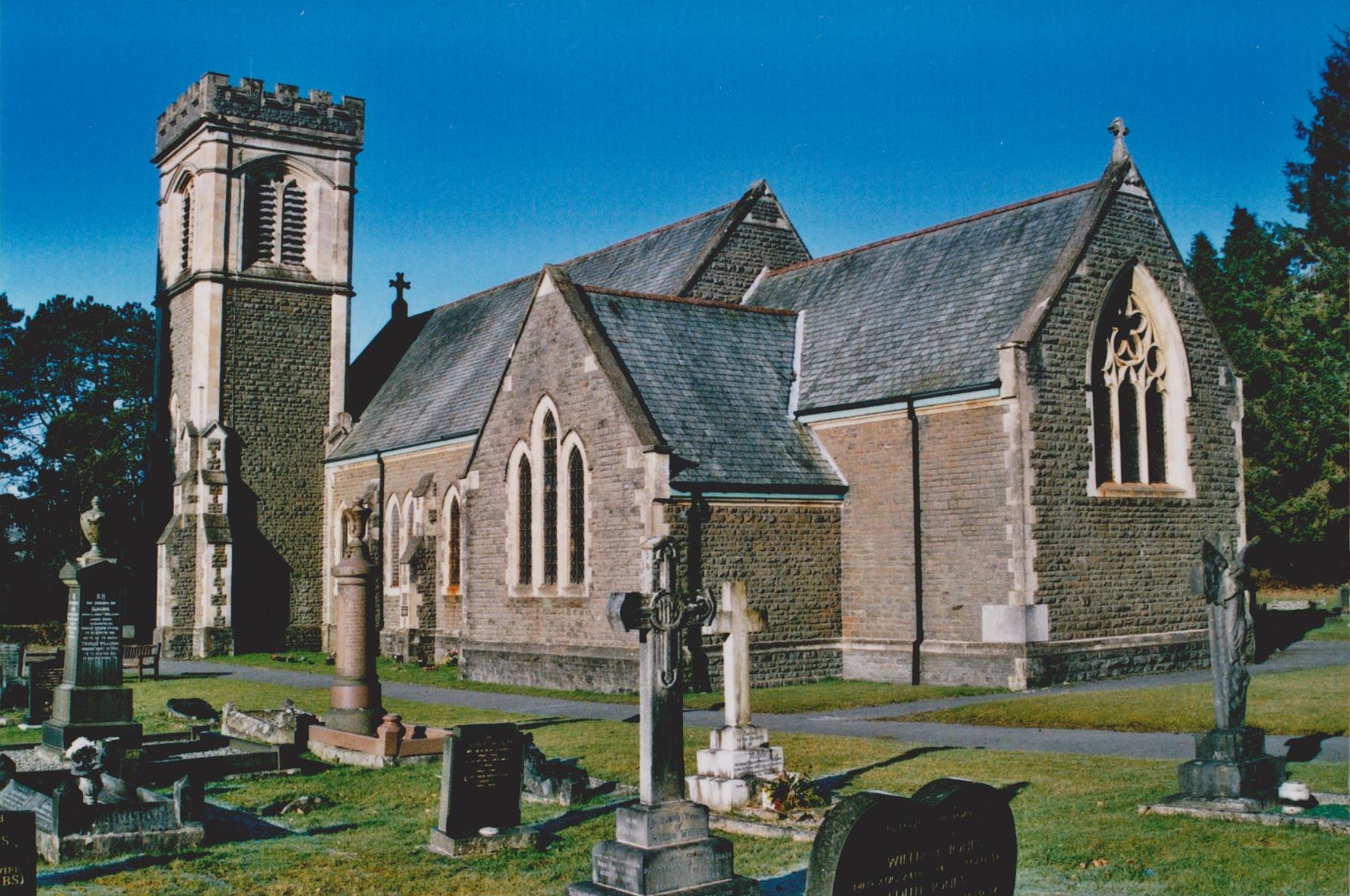
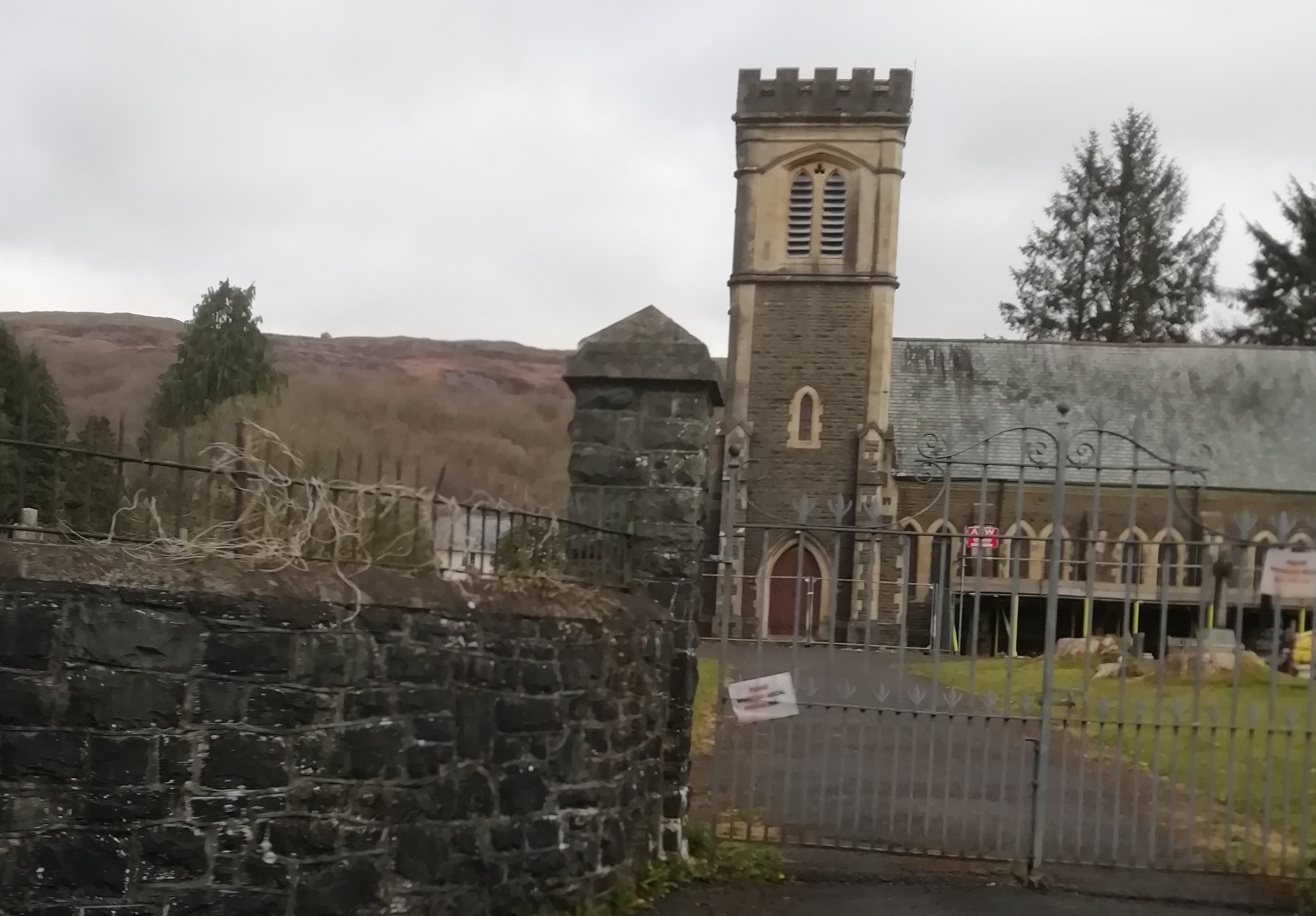
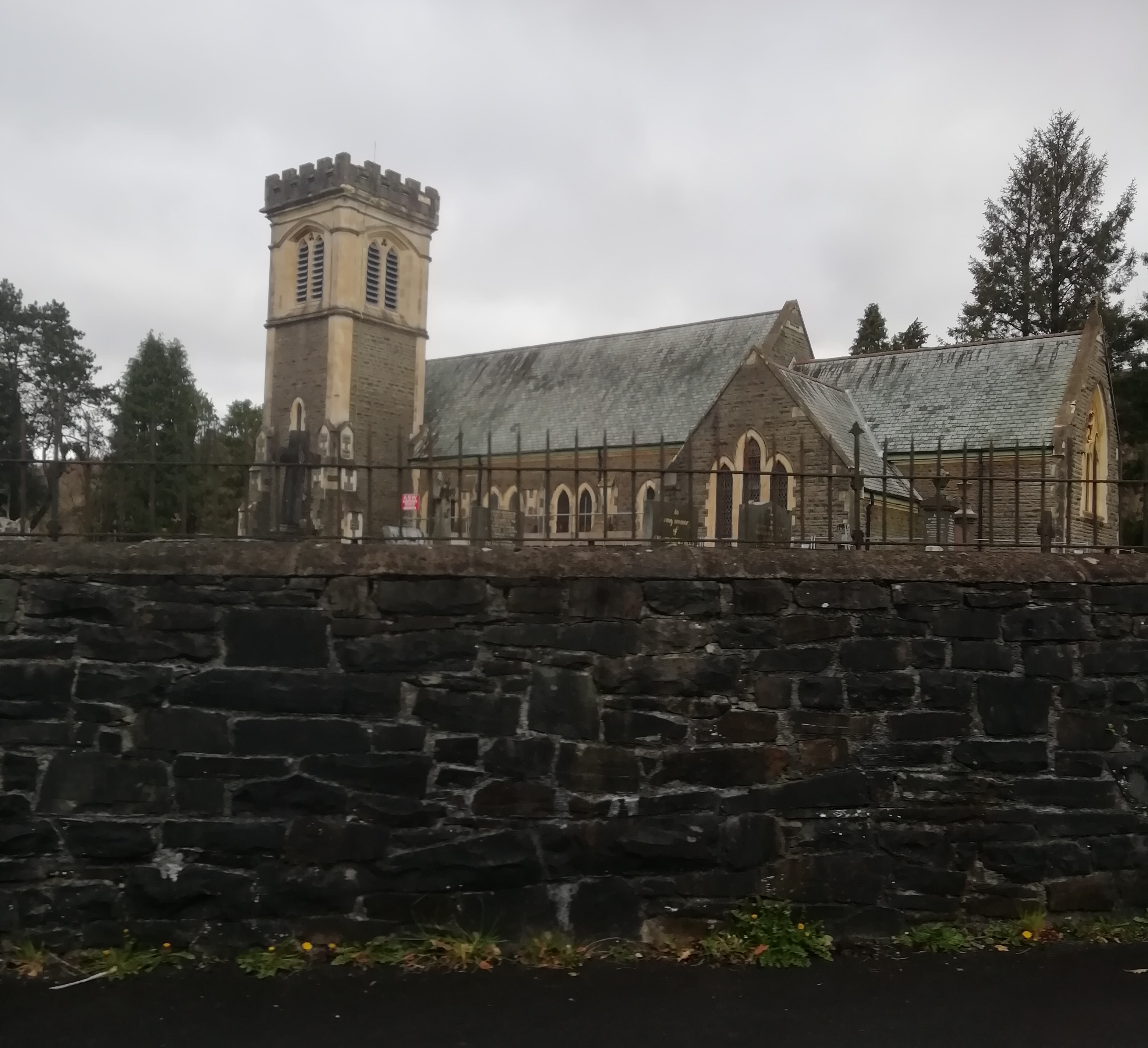
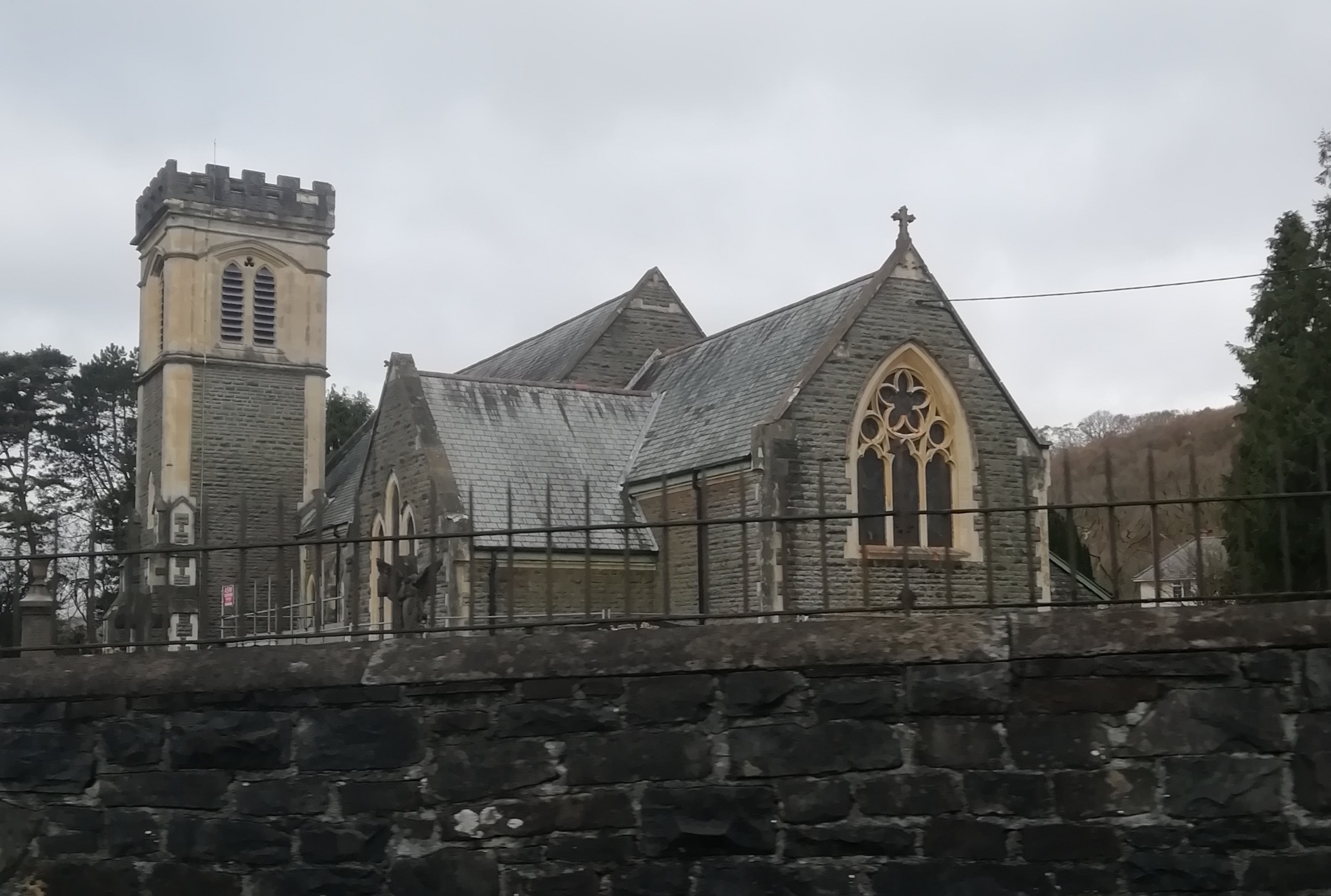
The latter 3 pictures above were taken in April 2021, when the church building is now up for sale.
Inside Saint David's Church
Abercrave
The interior of Saint David's Church, Abercrave includes the war memorial plaque upon the wall, as well as memorials to local families, among which are those of Spanish origin, including that of the Macho family. As well as a striking lectern, and front, the church was well-known for the ornate pulpit with the figure of a bishop carved upon the outside.
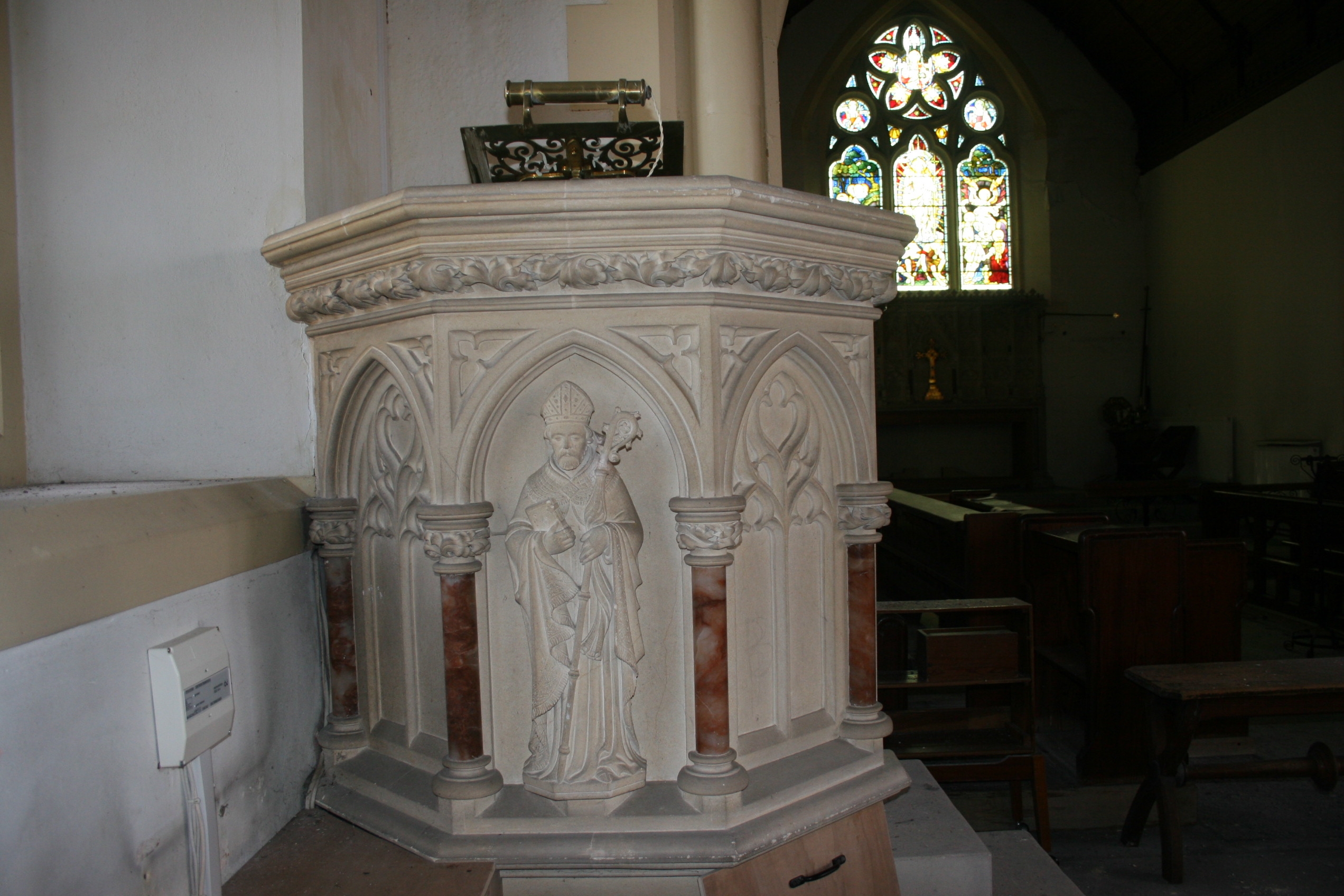
The pulpit inside Saint David's Church, Abercrave.
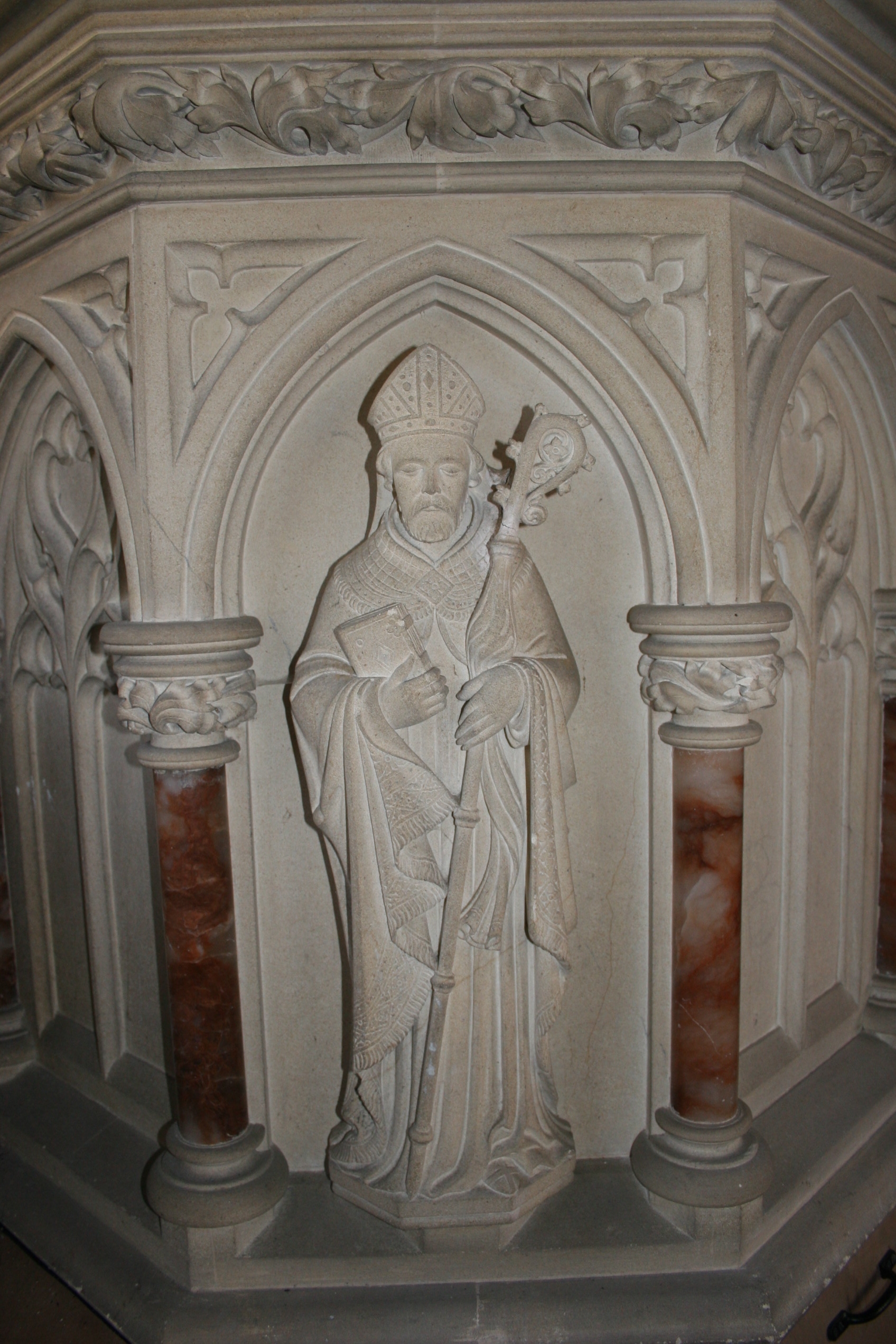
Showing detail of the figure of the bishop on the side of the pulpit of Saint David's Church, Abercrave
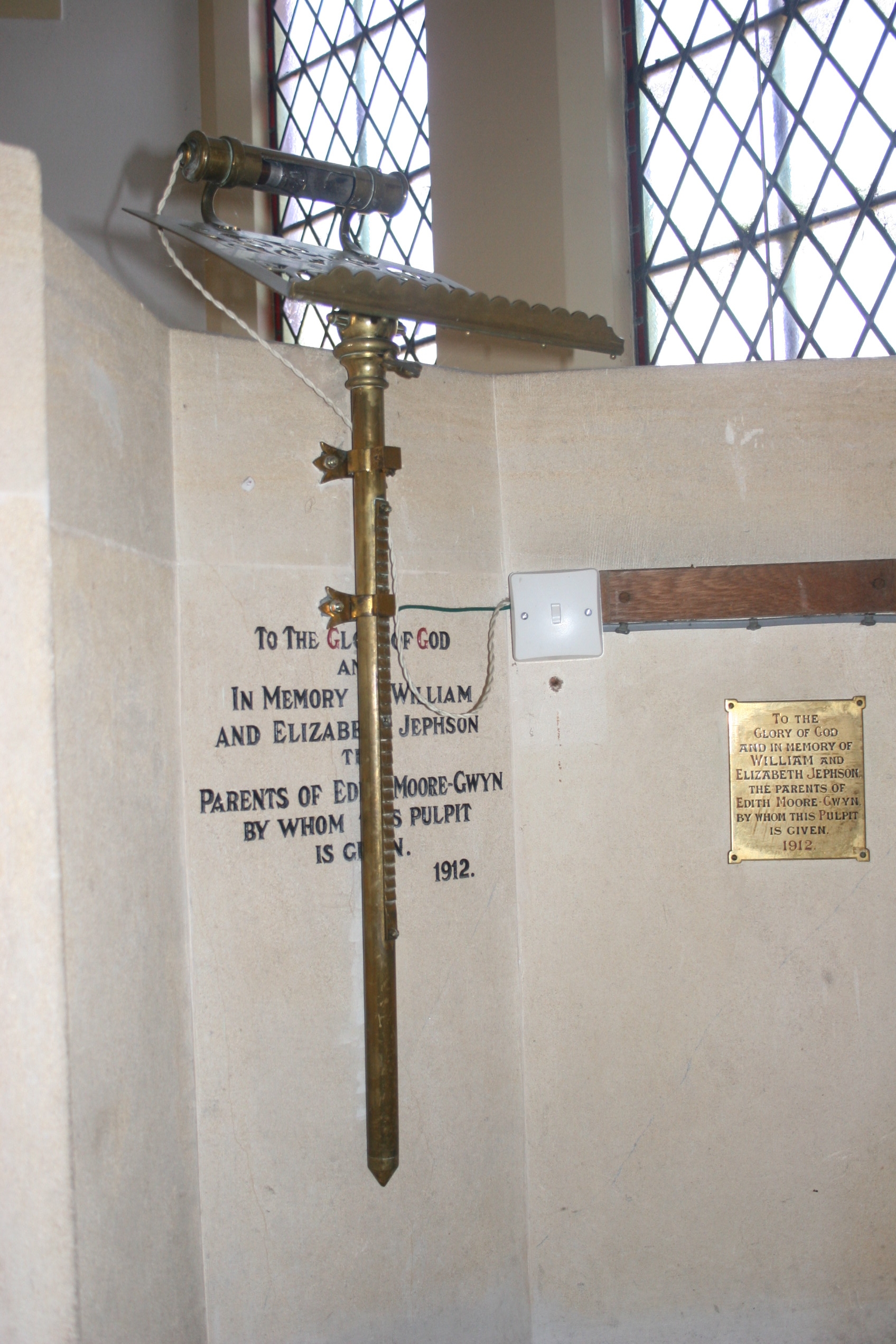
Both the inscription on the interior of the pulpit, and the brass plaque next to it reads:-
To the Glory of God
And in Memory of
William and Elizabeth Jephson
The parents of Edith Moore-Gwyn
By whom this pulpit is given
1912
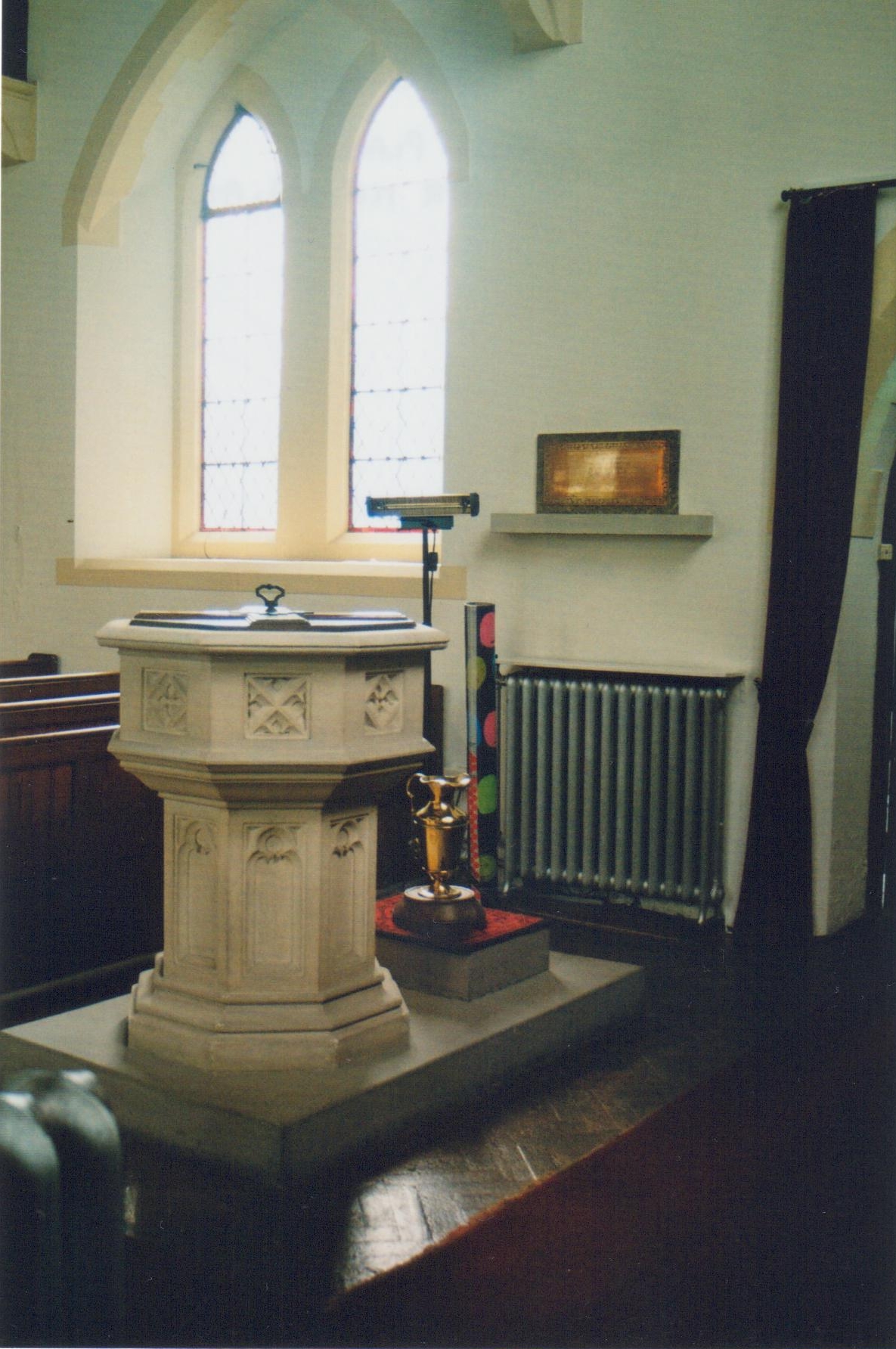
The brass plaque inside Saint David's Church, Abercrave remembers parishioners who fell during the Second World War. Full details can be read on the St. David's Church memorials webpage. The plaque is positioned on the wall, behind the font.
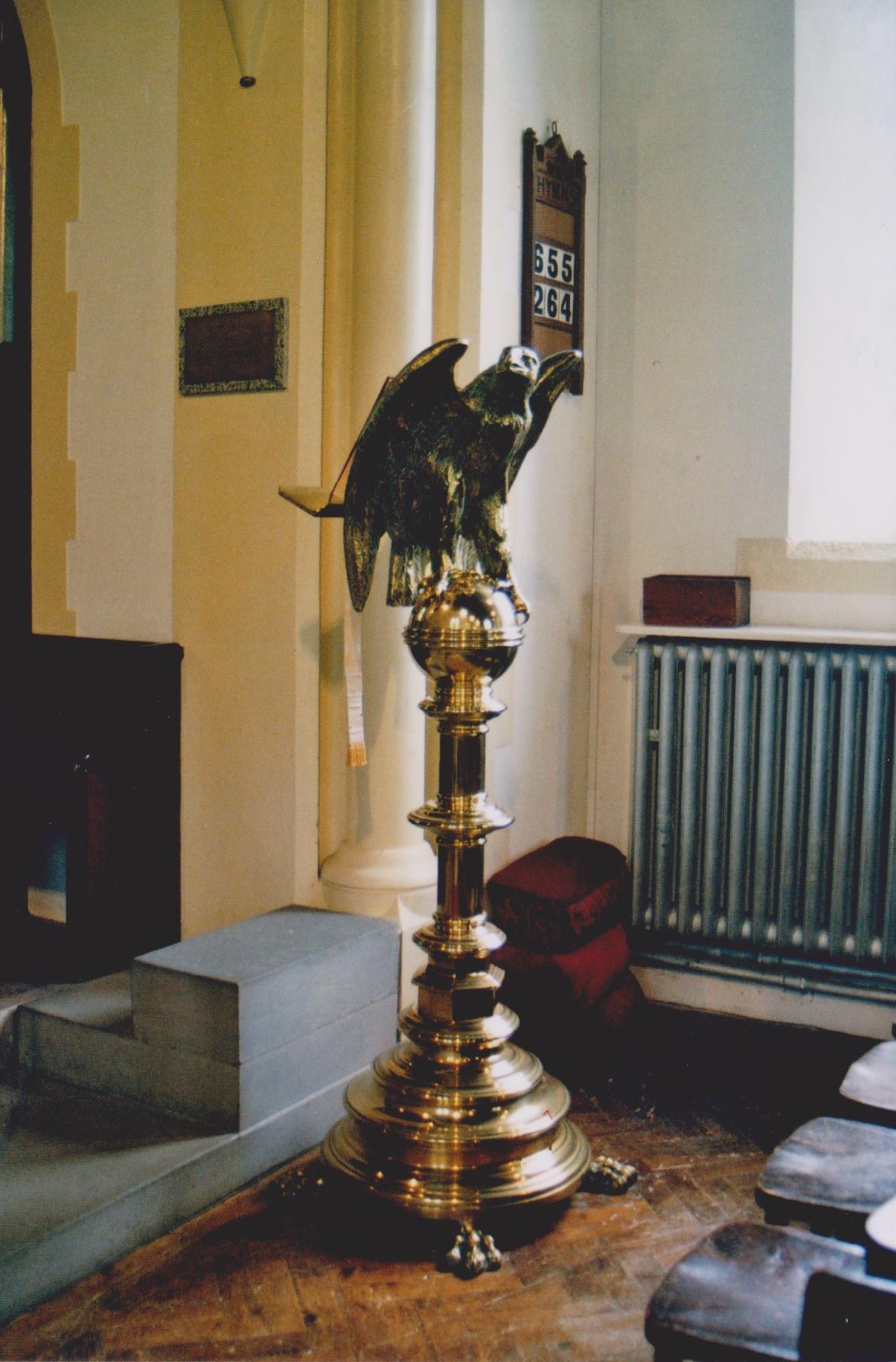
The lectern within Saint David's Church
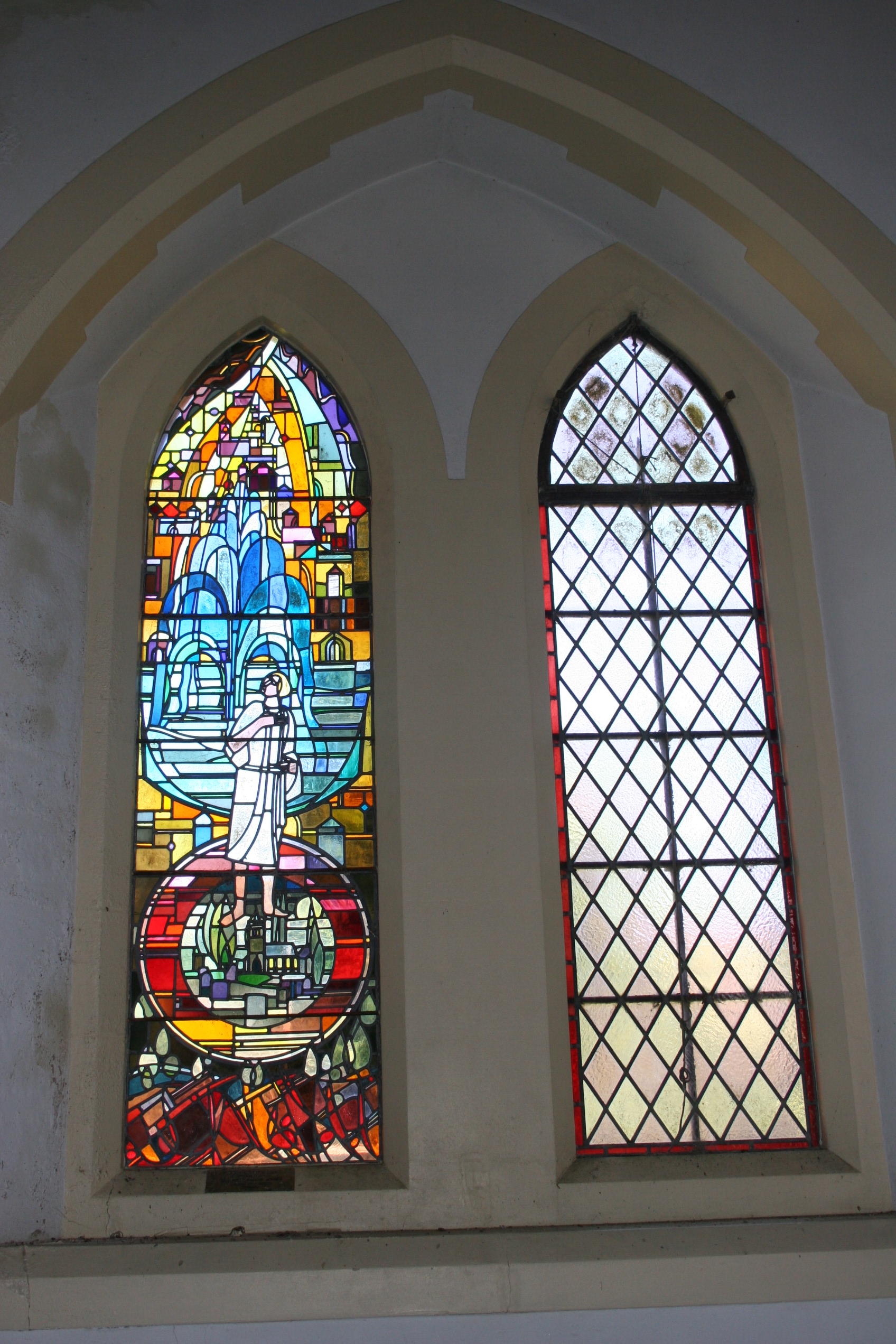
The memorial window to Reverend W. Edward Jones, Vicar of Abercrave from 1935 until his death in 1971. On a brass plate beneath the window, it says:-
To the glory of God and in Remembrance of
William Edward Jones
Vicar of this Parish
1935 - 1971
Saint David's Churchyard
Abercrave
For over a century burials have been occuring in the cemetery of Saint David's Church, Abercrave.
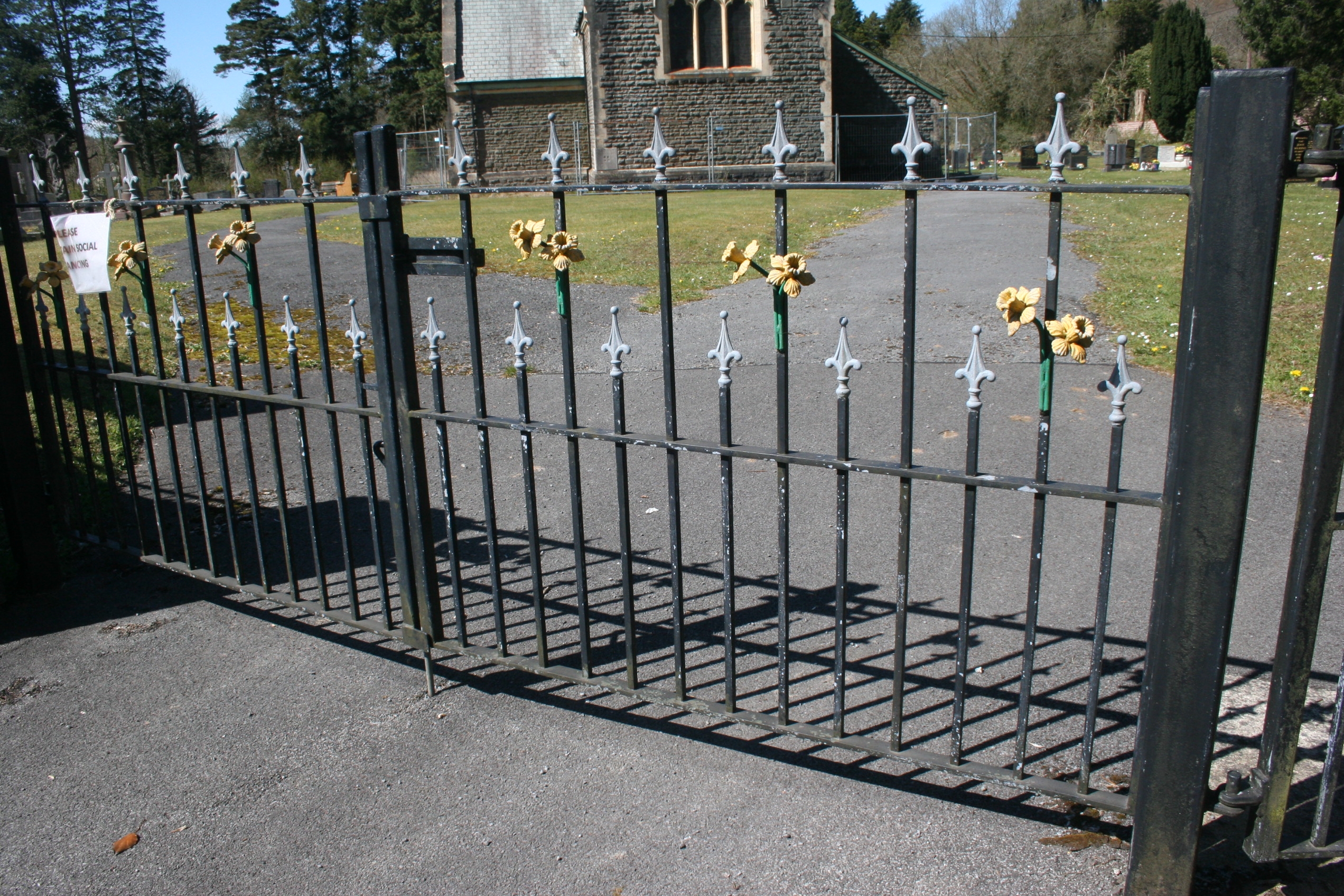
The main gates to the cemetery of Saint David's Church, Abercrave
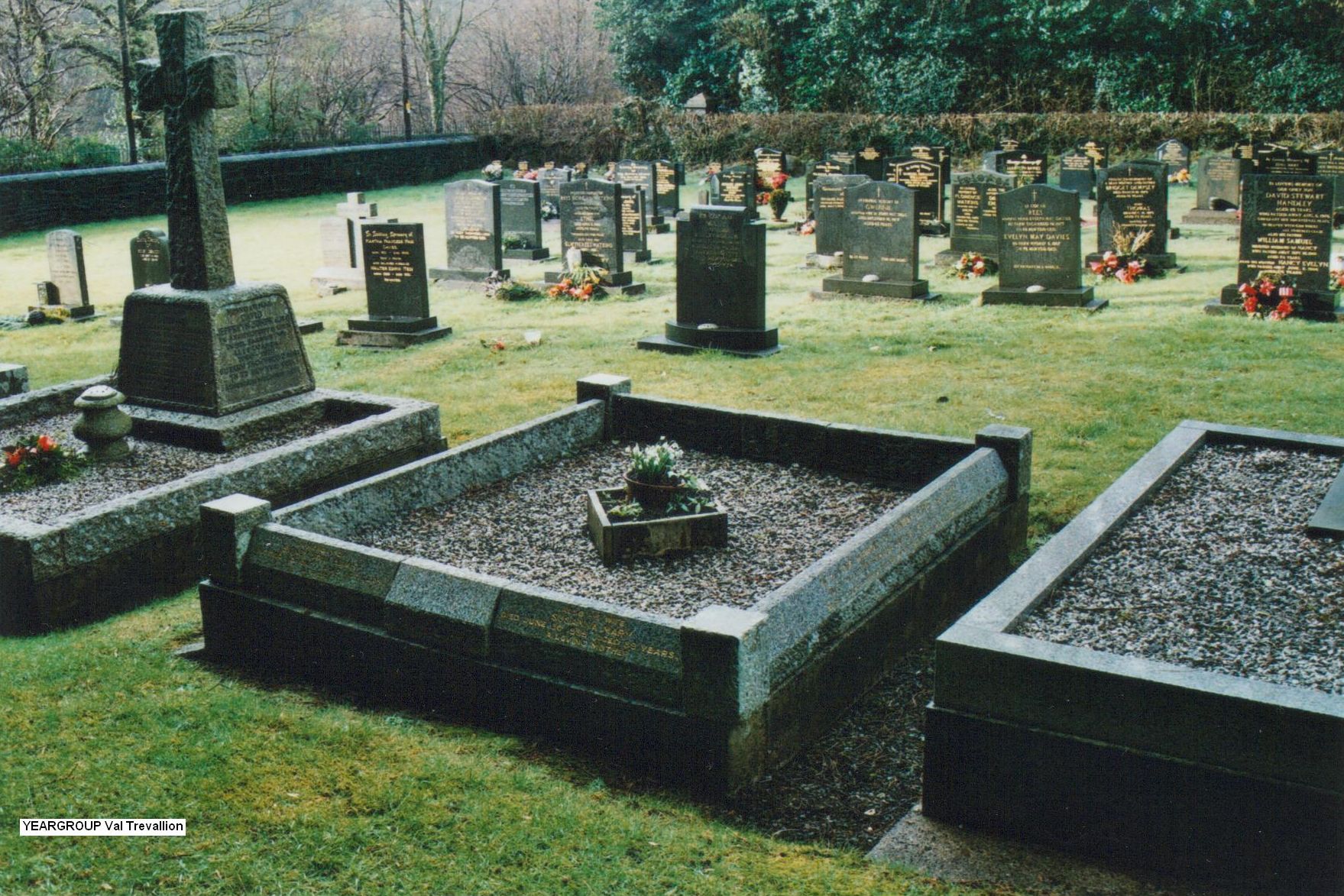
The grave in St. David's churchyard, Abercrave, remembering Jenkin Gildas Lewis, who died in the Second World War. A full overview of the war graves and rememberance graves located in St. David's cemetery can be found at our Ystradgynlais Wargraves website.
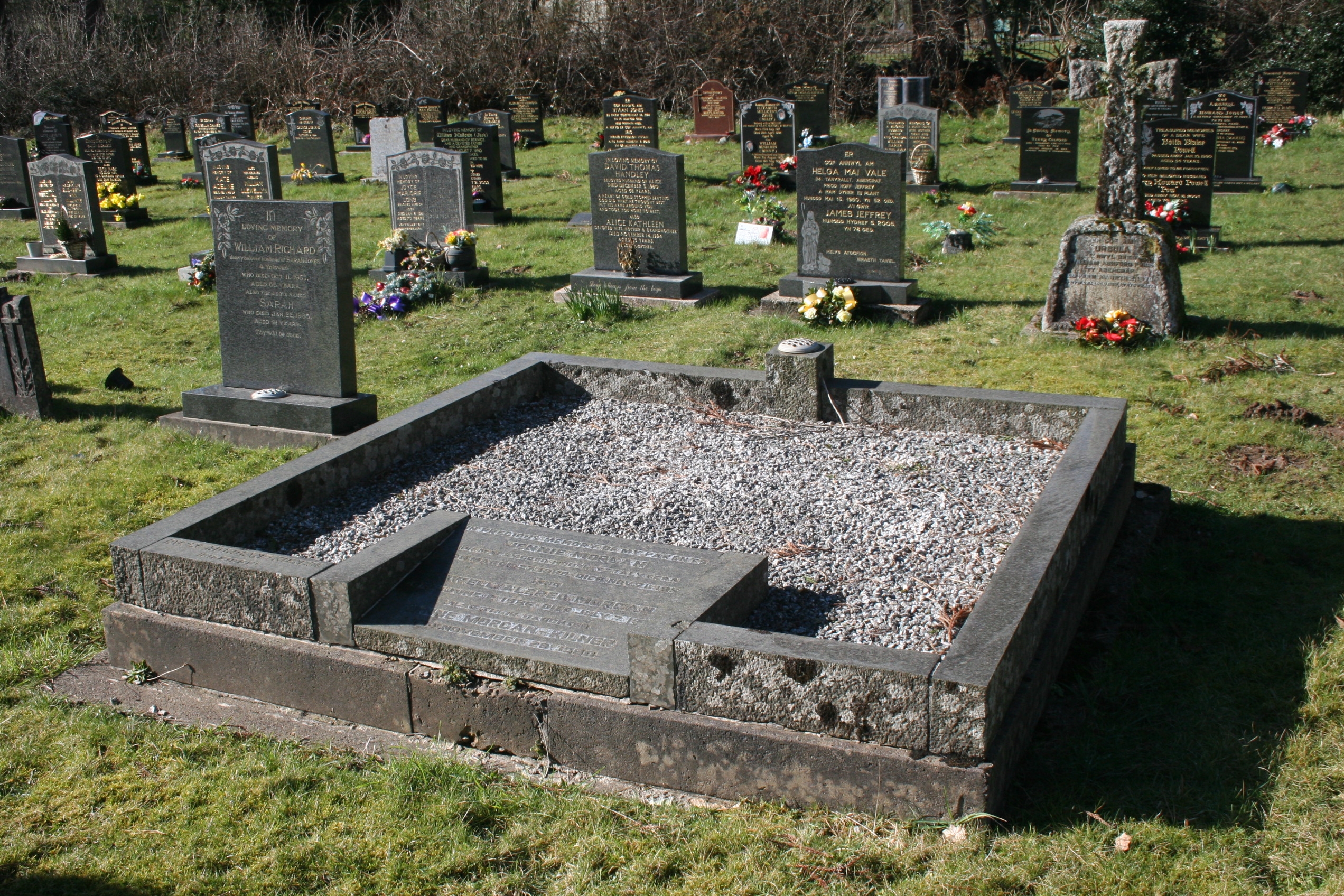
The Morgan grave in Saint David's cemetery remembering Jennie Morgan (1888-1954), Howell Alfred Morgan (1886-1969) and their daughter Anne Morgan-Kilner (1919-1980). View our page on Howell and Hamilton Morgan, their First World War service, and the day Hamilton Morgan landed his bomber on the Drum Mountain.
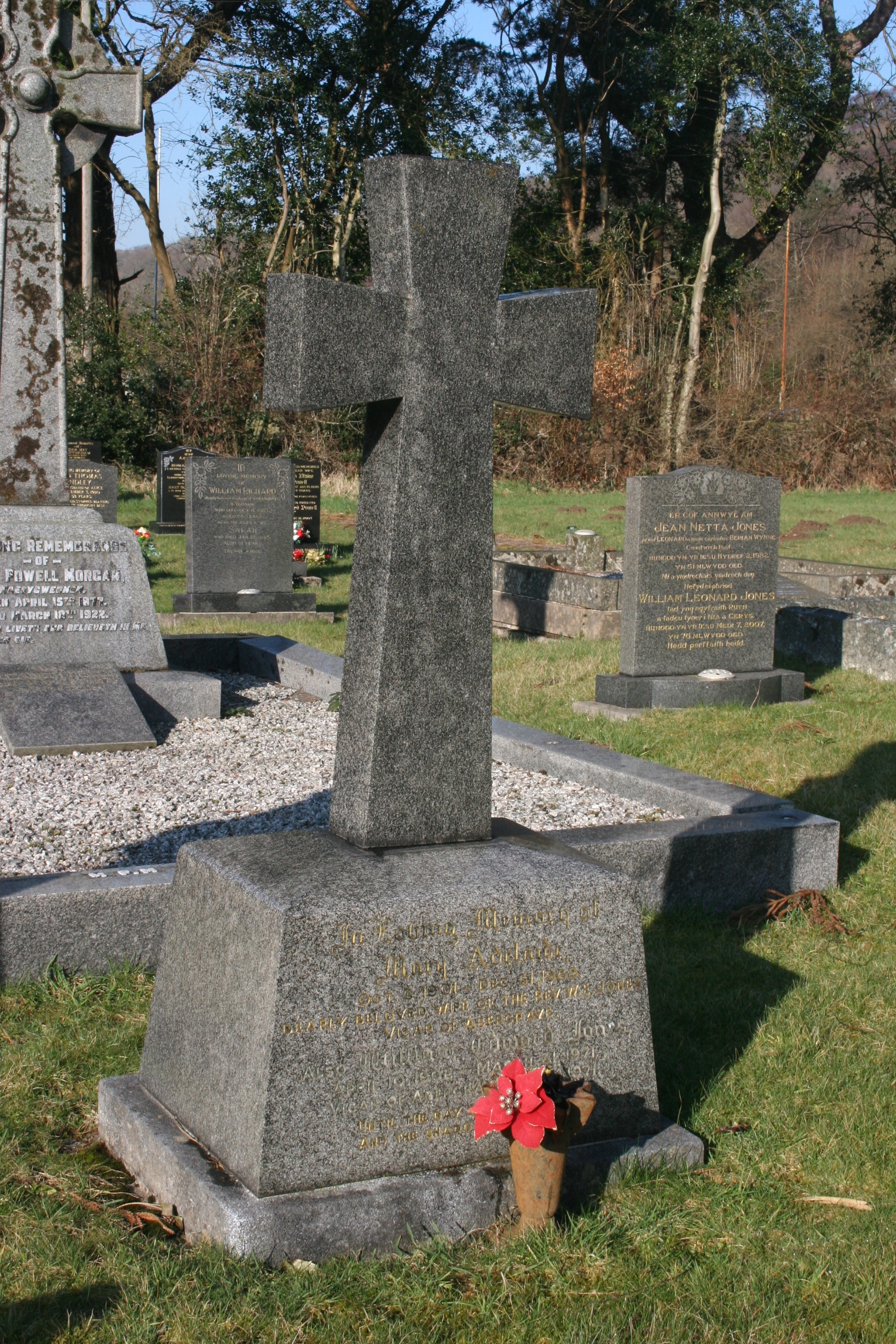
The grave for Reverend William Edward Jones and his wife Mary Adelaide in Saint David's cemetery, Abercrave. She died on 31st December 1969 aged 68 and was buried on 3rd January 1970. Reverend W. Edward Jones died a year and a few months later, being buried on 5th April 1971. His address was given as "The Vicarage, Abercrave" inferring that he was still serving as Vicar of Abercrave and Callwen at the time of his death, having being instituted at Abercrave in 1936, and at Callwen in 1957.
Click photograph to zoom in on the text
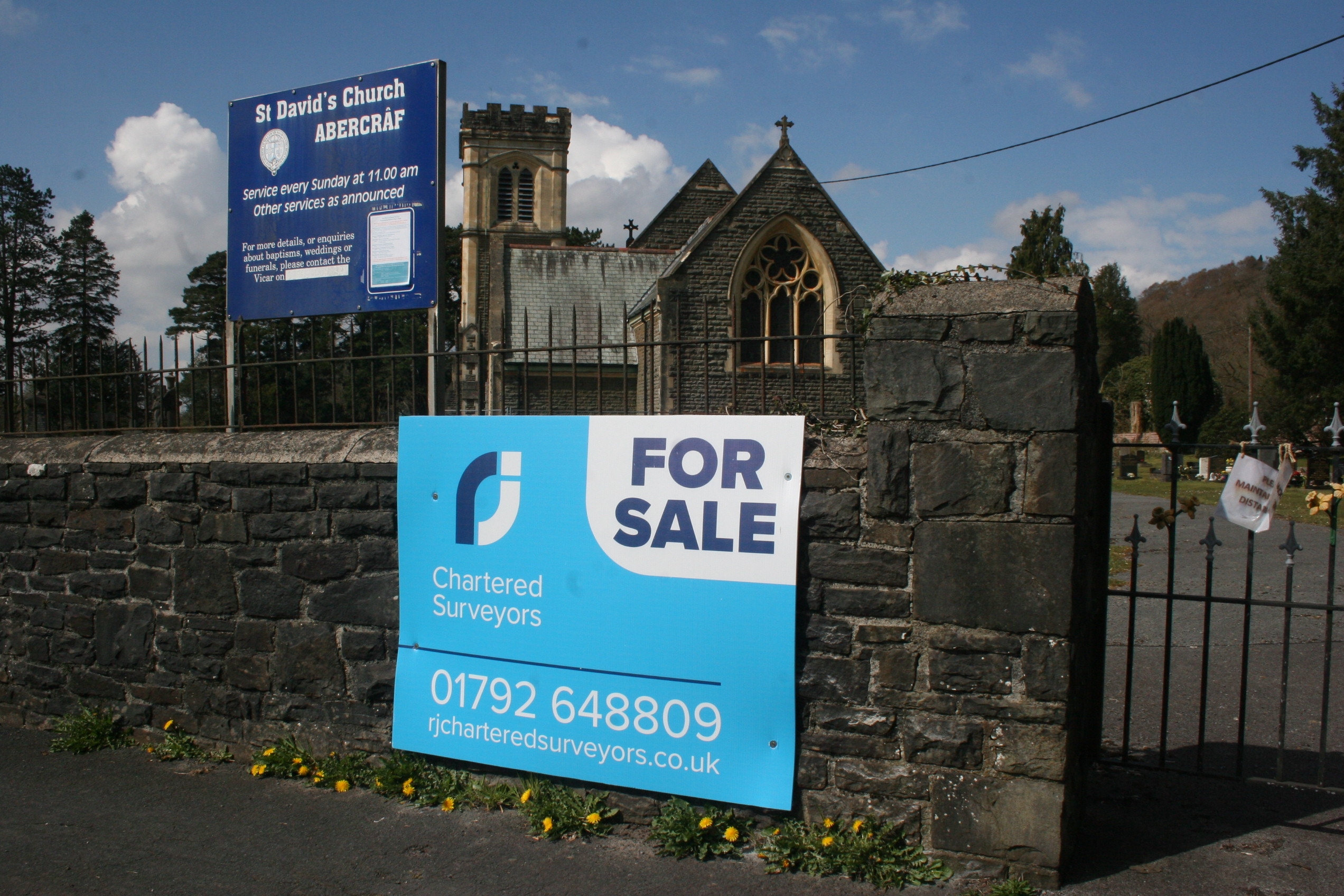
As of April 2021, Saint David's Church, Abercrave, is up for sale.
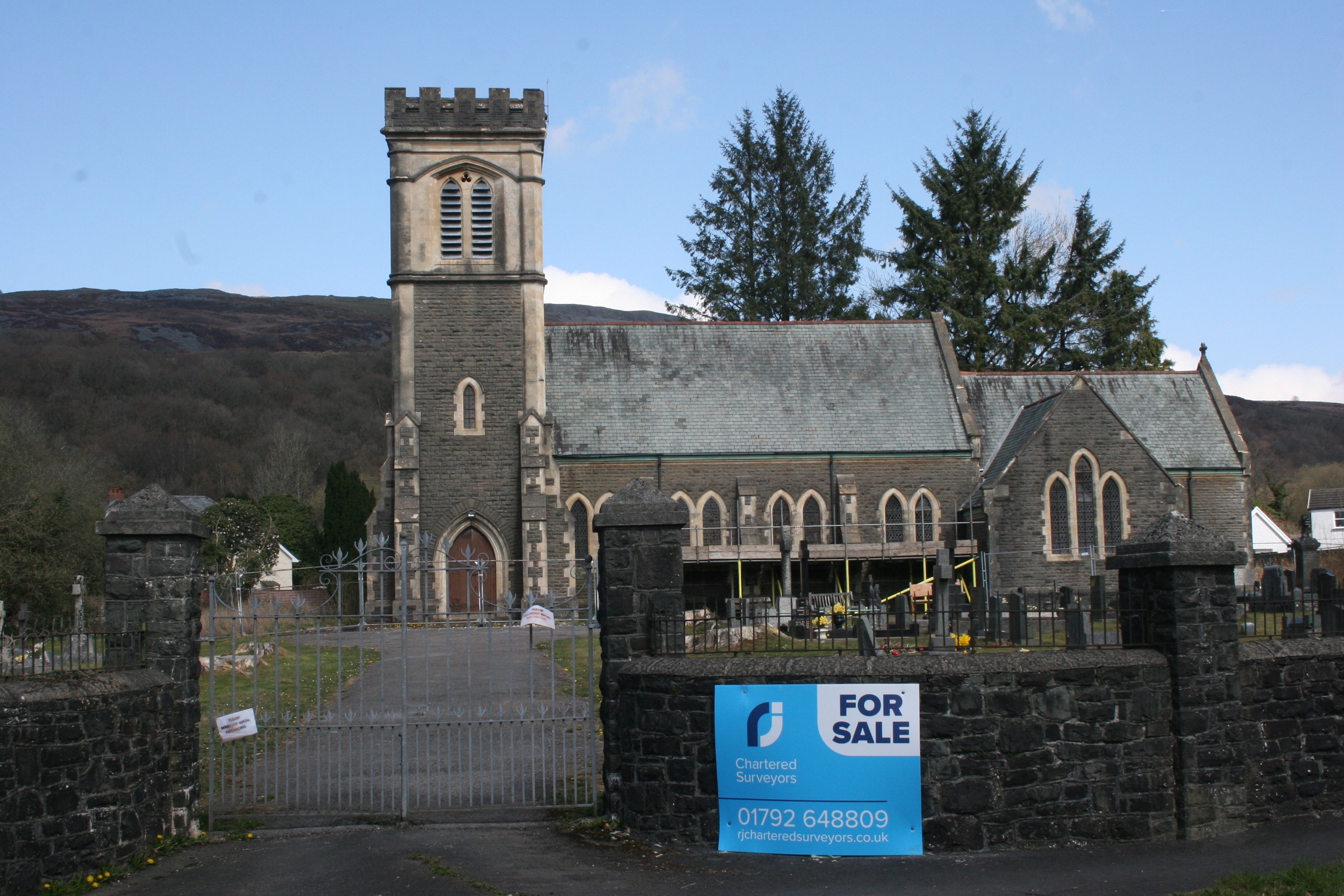
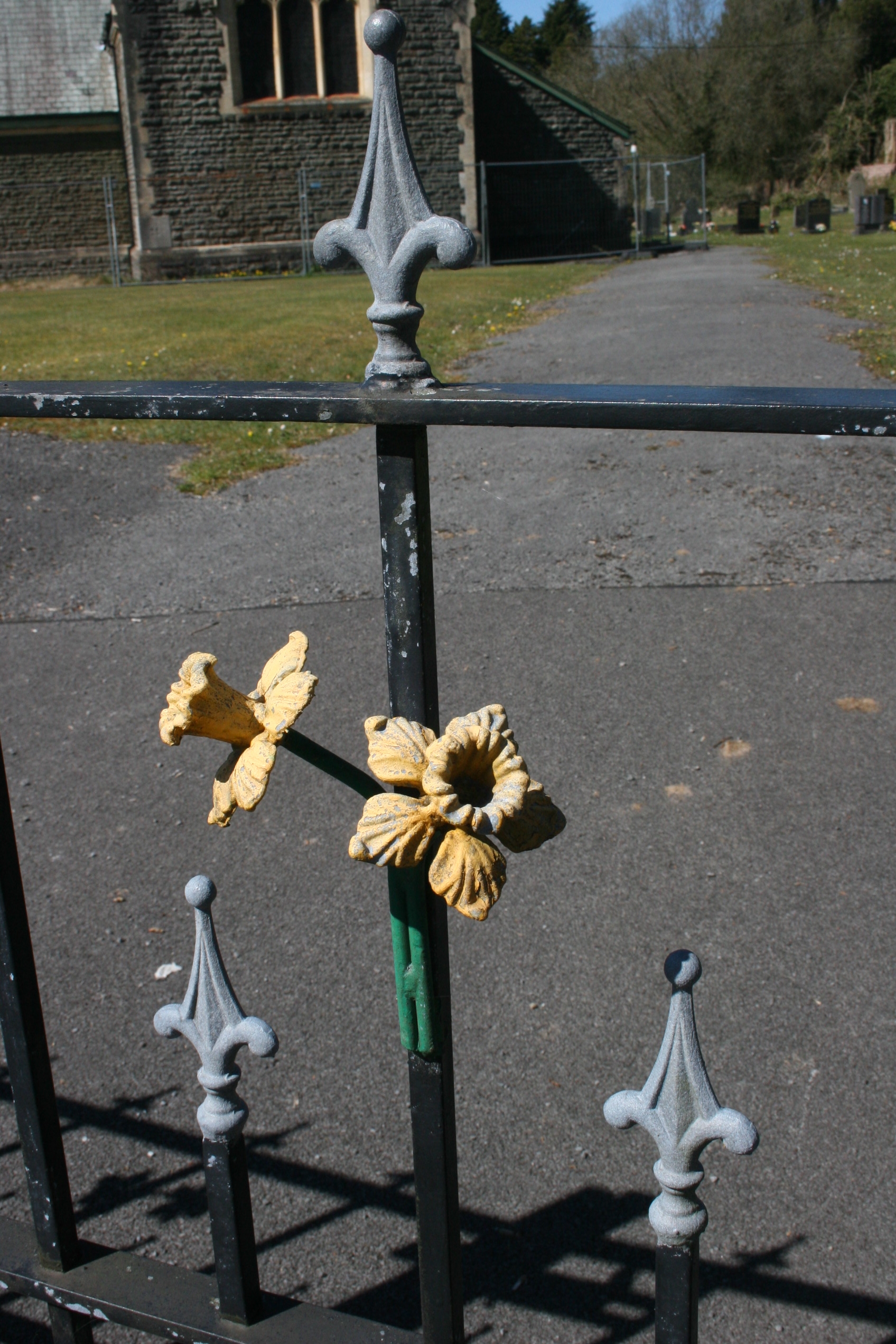
A close up of the delicate ironwork on the gate of Saint David's Church, Abercrave
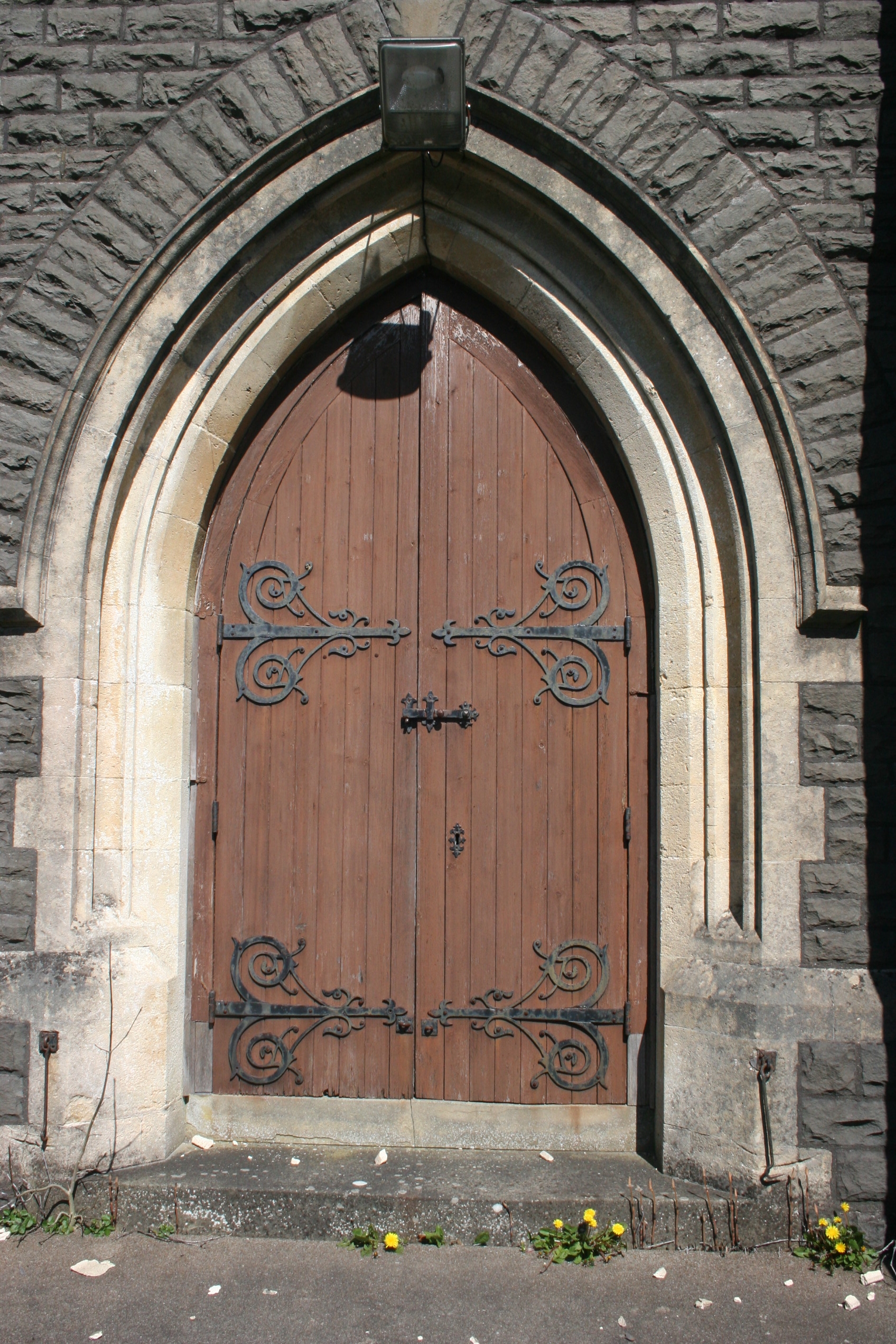
The door into Saint David's Church
Vicars of St. David's, Abercrave
Vicars of Saint David's, Abercrave began in 1925 with the institution of Rev. T.J. Rowlands. In 1957 the Vicar of Abercrave was also instituted as Vicar of Callwen, joining the two churches under one vicar.
Rev. T. J. Rowlands
The first Vicar of Abercrave was Reverend Thomas John Rowlands, M.A., instituted in 1925. He left by June 1927 to take on the vicarage of Holyhead. Born in 1886 at Menai Bridge, Anglesey, T.J. Rowlands was educated at Beaumaris Grammar School and graduated with honours from Jesus College, Oxford in 1906 before entering theological college at the University of Wales, Bala, gaining the Bachelor of Divinity in 1911, and his Masters in 1912. He was ordained a deacon at Abergwili in 1918 and a priest at Saint David's cathedral in 1919. In 1921 he became priest-in-charge at Saint Peter's, Newton, in the parish of Oystermouth, leaving that post in November 1924 to become the first vicar of the new parish of Abercrave.
D. Hilary Jones
The Reverend Daniel Hilary Jones, M.A., was born in April 1894 and was appointed as Vicar of Abercrave in June 1927, being instituted in a ceremony in August 1927. Prior to this position, he had been a curate in Oystermouth, Swansea. He was a former scholar of St. David's College, Lampeter and a graduate of Jesus College, Oxford, where he had served as Chaplain from 1921 to 1923. In November 1936 he was inducted to the vicariate of Llandeilo-Talybont, Pontardulais, and there is a marriage notice in August 1941 at Saint Teilo Church, Pontardulais, which has the Reverend D. Hilary Jones officiating. An article in the Western Mail 30th April 1943 describes him as Vicar of Pontardulais, and reports that he has been appointed rector of Saint Andrew's, Dinas Powis. He was still there in 1960, and by 1956 was a Canon in Llandaff Cathedral, still in that role by 1958. He was married to Margaret Winifred Evans, the daughter of Evan and Annie Evans of Ammanford, whose brother was Herbert George Evans, chemist, of Tumble. Rev. D. Hilary Jones performed the marriage ceremony of his brother-in-law to Dorothy Moore of Maida Vale in December 1927 at All Souls Church, Langham Place, London. Daniel Hilary Jones died in 1973, his wife having died in 1954.
W. Edward Jones
The Reverend William Edward Jones became Vicar of Abercrave in 1936. In July 1957 he also became Vicar of Callwen, when the two churches were joined into one parish. A newspaper article on this latter institution can be read on the webpage for the Vicars of Callwen. Rev. William Edward Jones died in office as Vicar in 1971, aged 69, and is buried in Saint David's churchyard alongside his wife Mary who had died 2 years previously.
Desmond Evans
The Reverend Desmond Evans was Vicar of Abercrave and Callwen. He died in February 2018 at the age of 91, after retiring in XXXX, and his funeral was held at Saint Cynog's Church, Ystradgynlais.
Alun Brookfield
The Reverend Alun Brookfield was the last Vicar of Abercrave, before Saint David's Church, from 2003 until it was closed in 2016 and the parishes reorganised into ministry areas. In 2009, he undertook an 82 miles pilgrimage from Abercrave to Saint David's Cathedral, to raise funds for a community centre.
From The Llais
The Llais newspaper had always included a round-up of happenings at local churches and chapels, even when these were not part of any particular story. Sometimes they advertised forthcoming events, and at other times who was preaching, or had preached there recently.
From the Labour Voice newspaper, DATE:-

TITLE
ARTICLE BODY
From the Voice DATE, WHAT:-
TITLE
ARTICLE BODY
